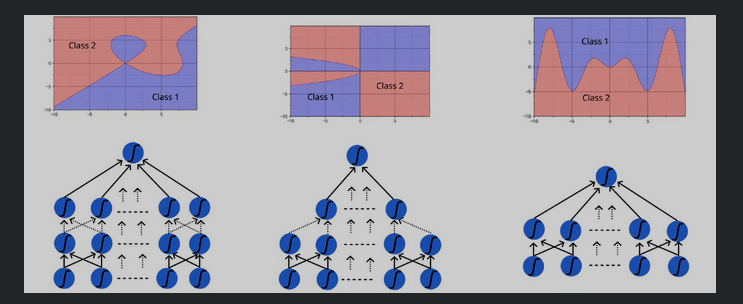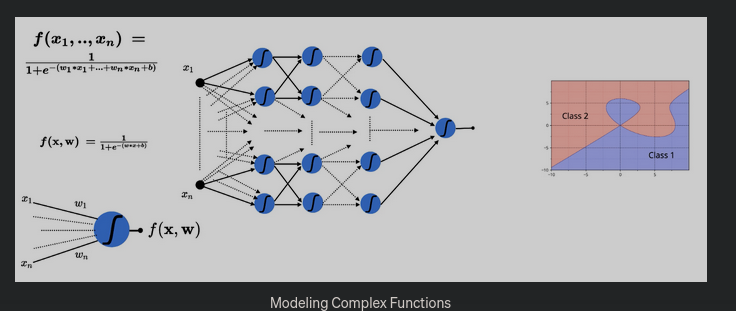Universal Approximation Theorem
-
What this means that given an x and a y, the NN can identify a mapping between them. “Approximately”.
-
This is required when we have non linearly separable data.
-
So we take a non linear function, for example the Sigmoid. .
-
Then we have to combine multiple such neurons in a way such that we can accurately model our problem. The end result is a complex function and the existing weights are distributed across many Layers.
-
The Universal approximation theorem states that
a feed forward network with a single hidden layer containing a finite number of neurons can approximate continuous functions on compact subsets of , under mild assumptions on the activation function.
-
a feed forward network : take an input, apply a function, get an output, repeat
-
a single hidden layer : yes you can use more, but theoretically…
-
finite number of neurons: you can do it without needing an infinite computer
-
approximate continuous functions: continuous functions are anything which dont have breaks/holes in between. This just says that it is possible to approximate the mapping which we talked about is just the set of all real numbers
-
All this boils down to the fact that a neural network can approximate any complex relation given an input and an output.
-

-
